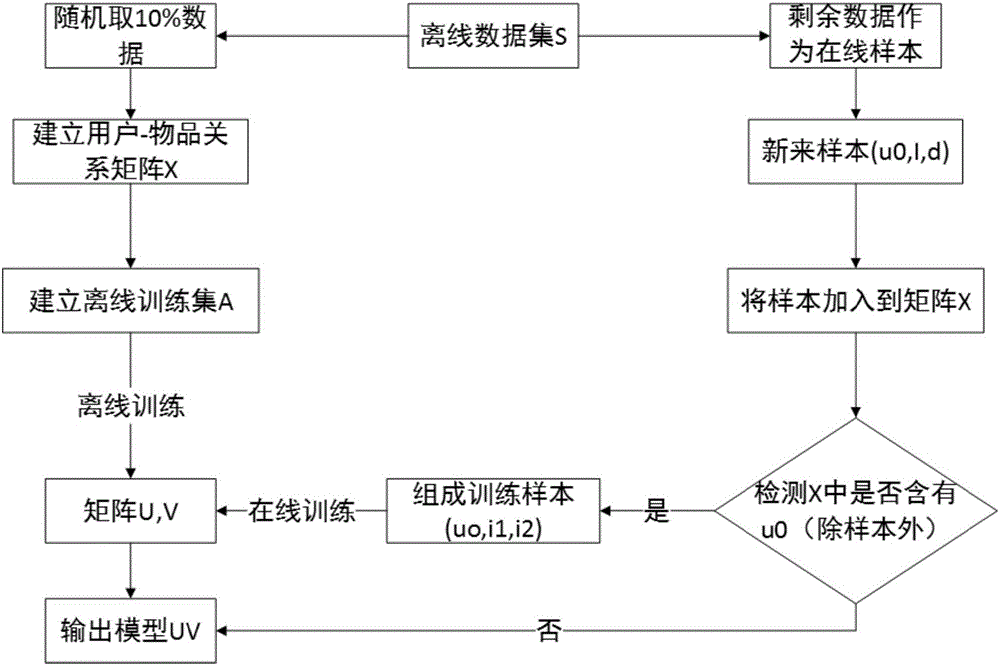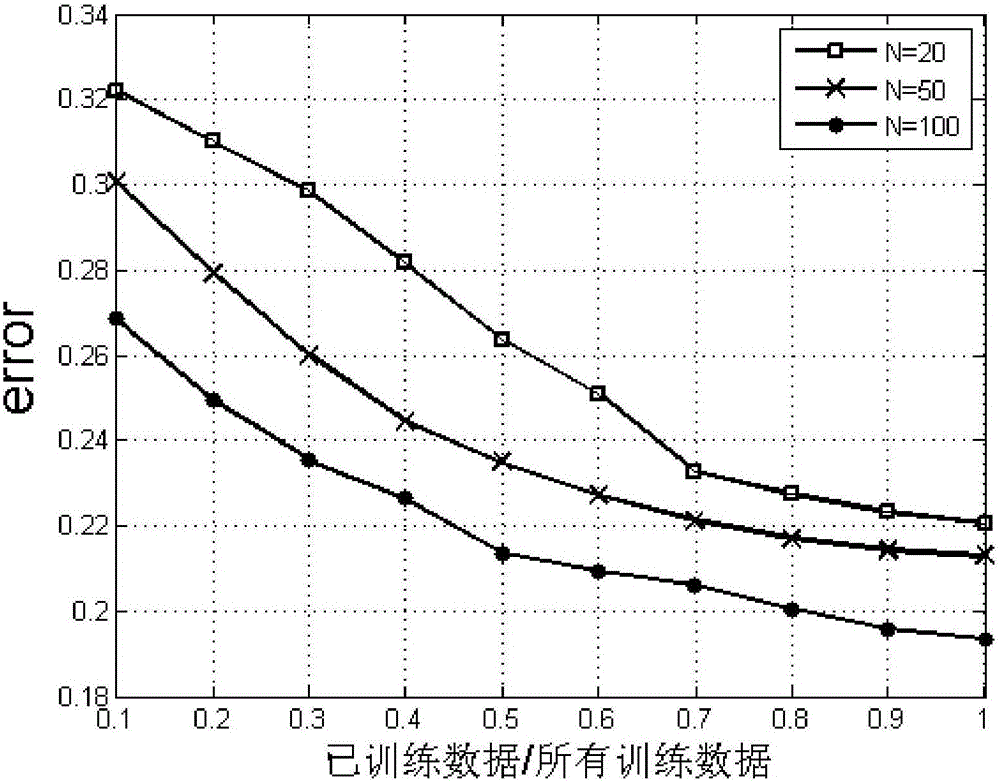Online collaborative ordering method based on stochastic gradient descent
A stochastic gradient descent and sorting method technology, applied in the field of pattern recognition, can solve the problems of long algorithm training time, the recommendation effect needs to be improved, and the collaborative sorting algorithm cannot perform online training to update the recommendation results in real time, so as to improve the recommendation efficiency and shorten the training. effect of duration
- Summary
- Abstract
- Description
- Claims
- Application Information
AI Technical Summary
Problems solved by technology
Method used
Image
Examples
Embodiment approach
[0098] figure 1 Shown is the process flow of the online collaborative sorting method based on stochastic gradient descent provided by the present invention, and the embodiment of the present invention is as follows:
[0099] Step 1: Select the data set S, and divide the data set into two randomly. In this embodiment, 10% of the data in the data set is taken as the initial offline training set in the real environment with a ratio of 1:9, which corresponds to the actual scene It is difficult to obtain a lot of data for the recommendation system in , and only a small part of the data can be used for initial training;
[0100] Step 2: Use the rating data of 10% of the data set in step 1 to establish a user-product rating matrix X, X ij Represents user i's rating for product j. In the matrix, we combine all the rating triplets (u, v, d) in each row, where d represents user u's rating for product v, which is combined into training data triplet (u, v 1 , v 2 ), the training data ...
PUM
 Login to View More
Login to View More Abstract
Description
Claims
Application Information
 Login to View More
Login to View More - R&D
- Intellectual Property
- Life Sciences
- Materials
- Tech Scout
- Unparalleled Data Quality
- Higher Quality Content
- 60% Fewer Hallucinations
Browse by: Latest US Patents, China's latest patents, Technical Efficacy Thesaurus, Application Domain, Technology Topic, Popular Technical Reports.
© 2025 PatSnap. All rights reserved.Legal|Privacy policy|Modern Slavery Act Transparency Statement|Sitemap|About US| Contact US: help@patsnap.com



